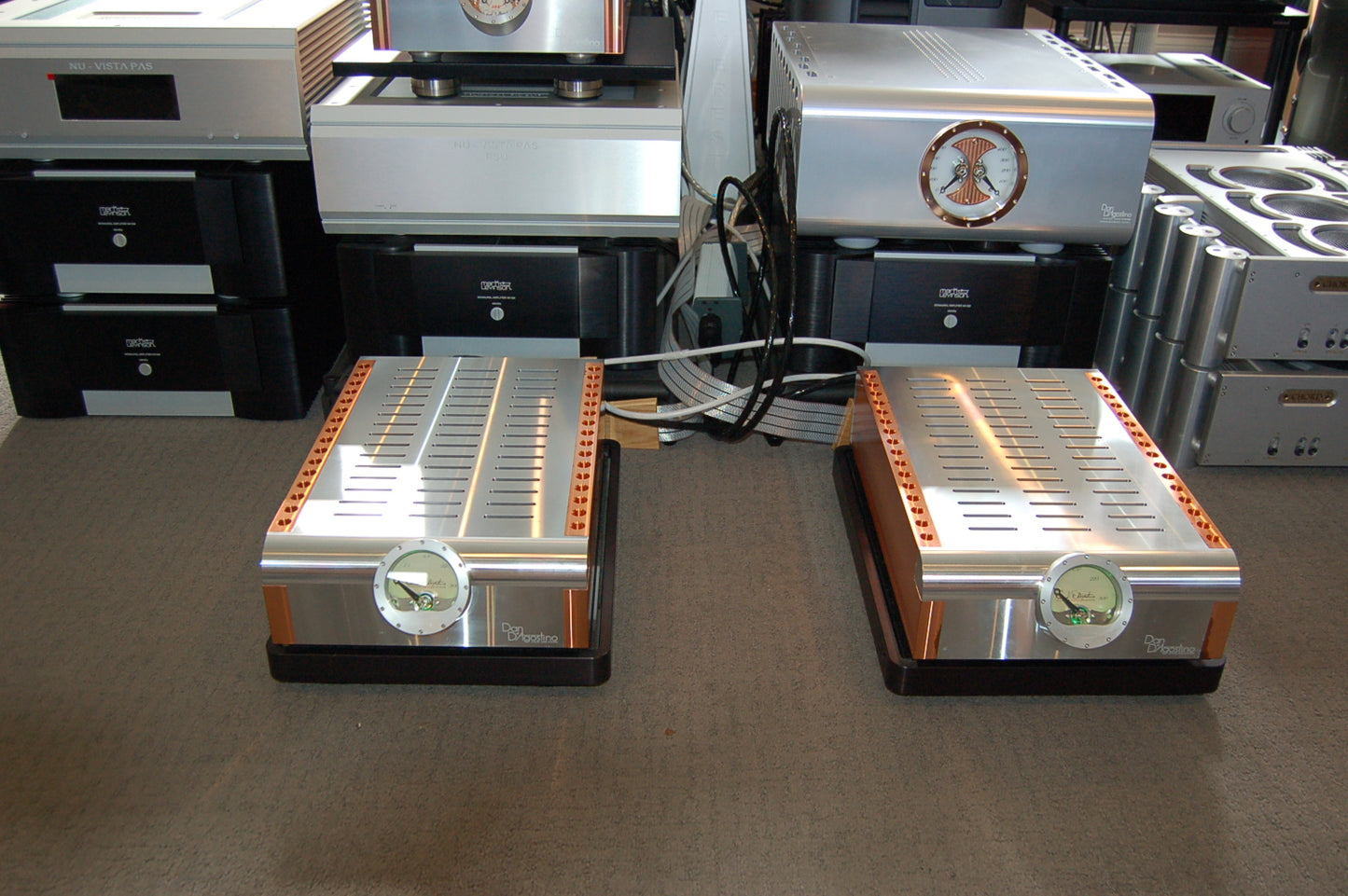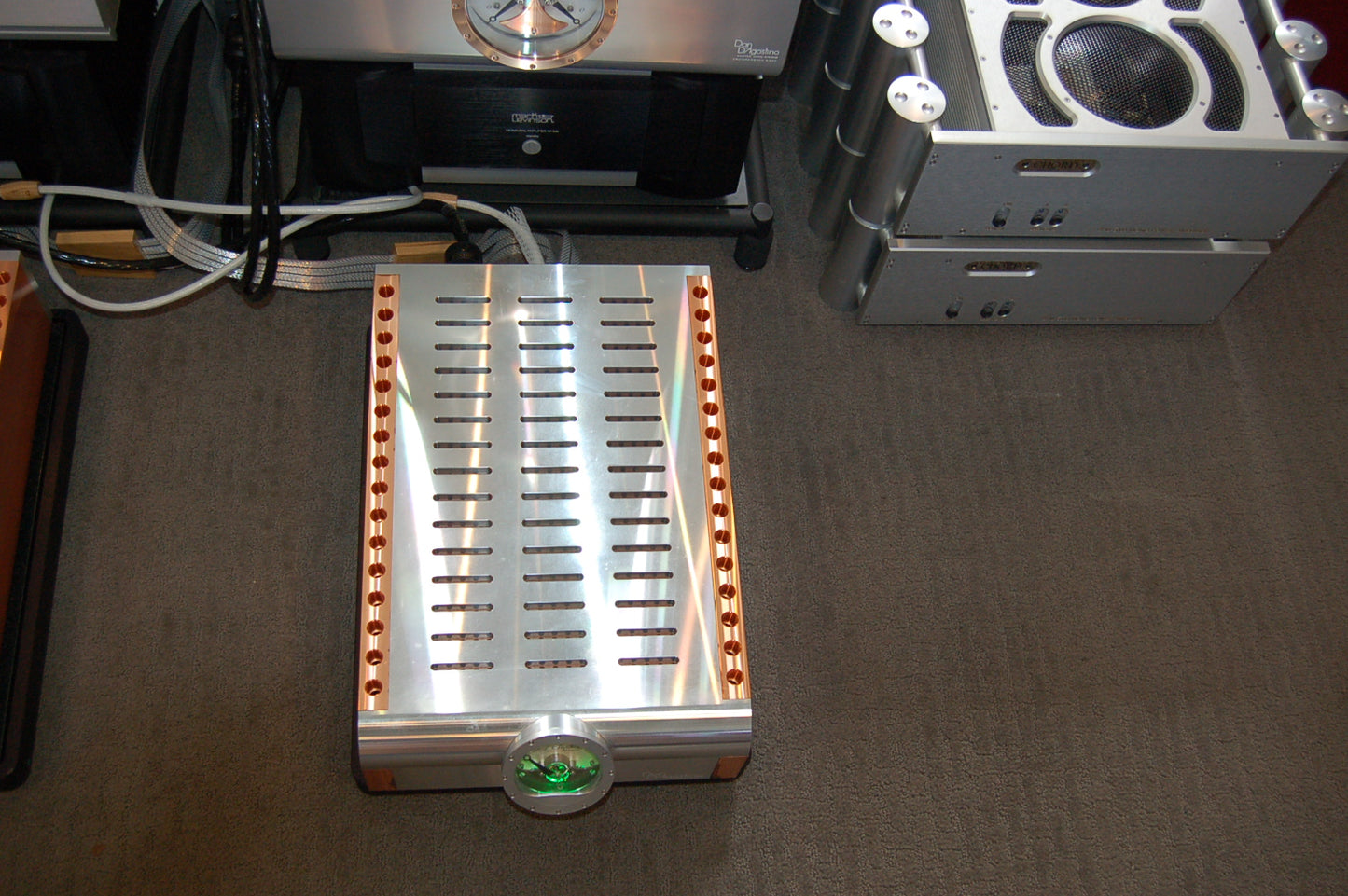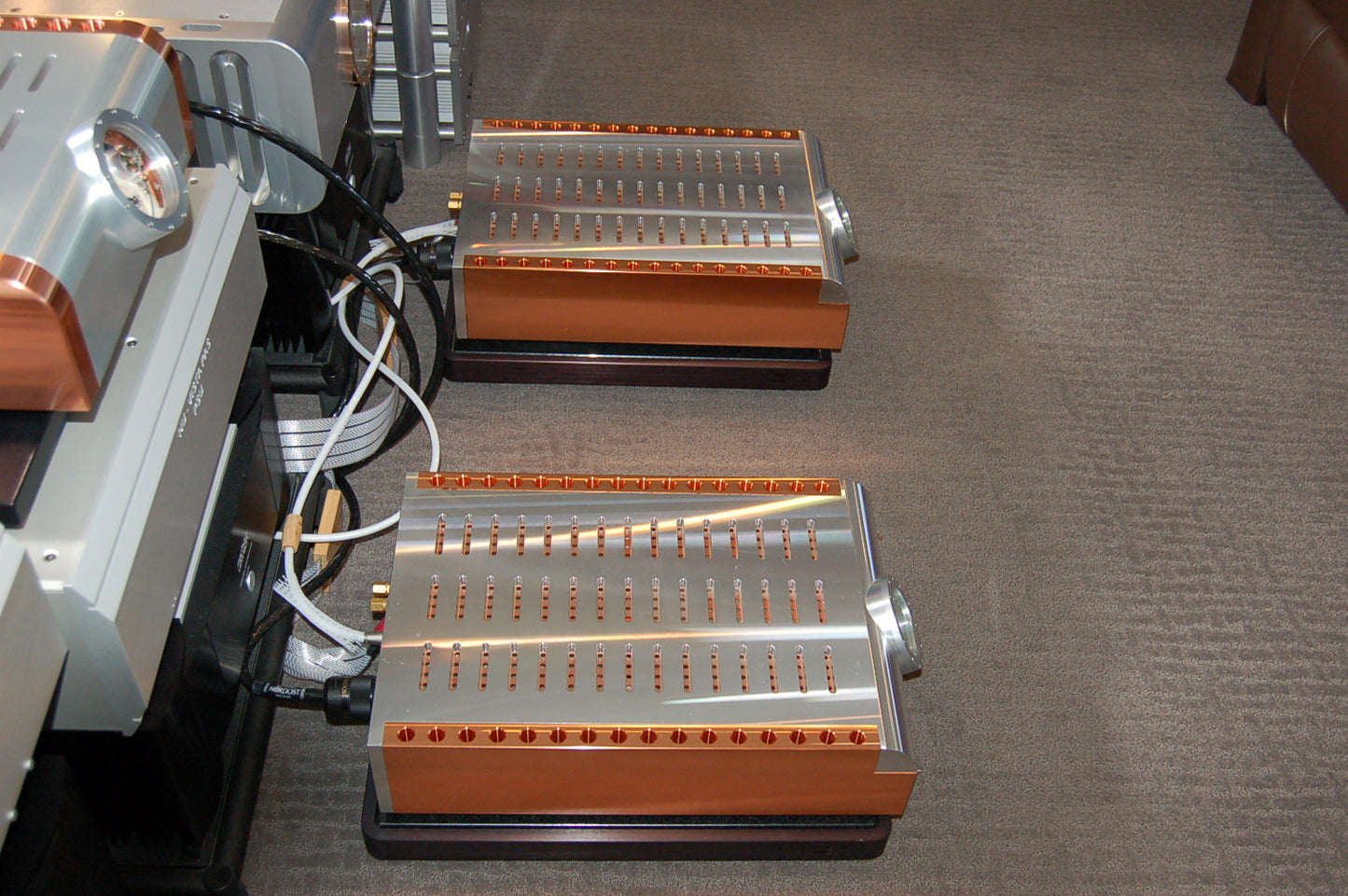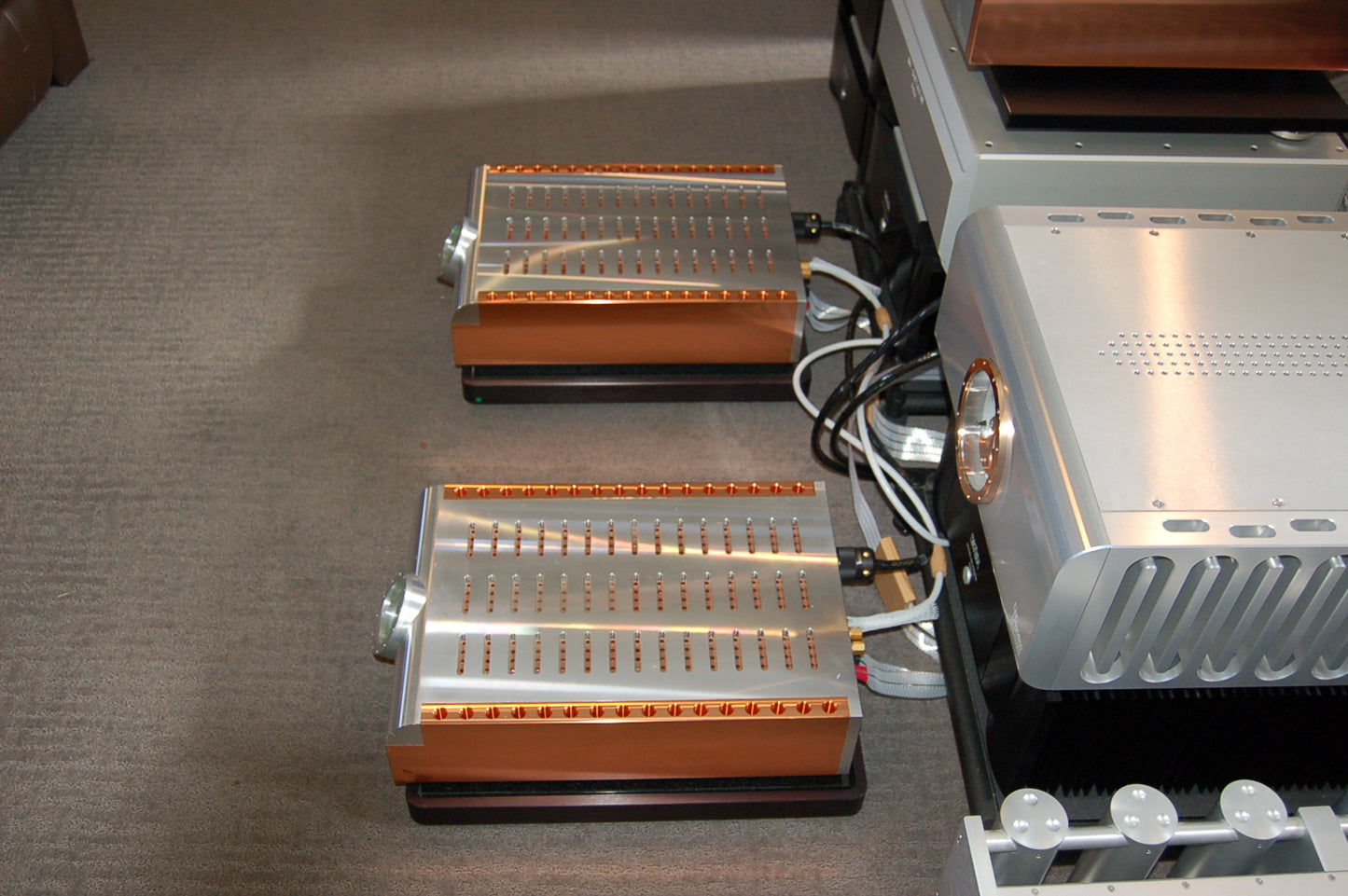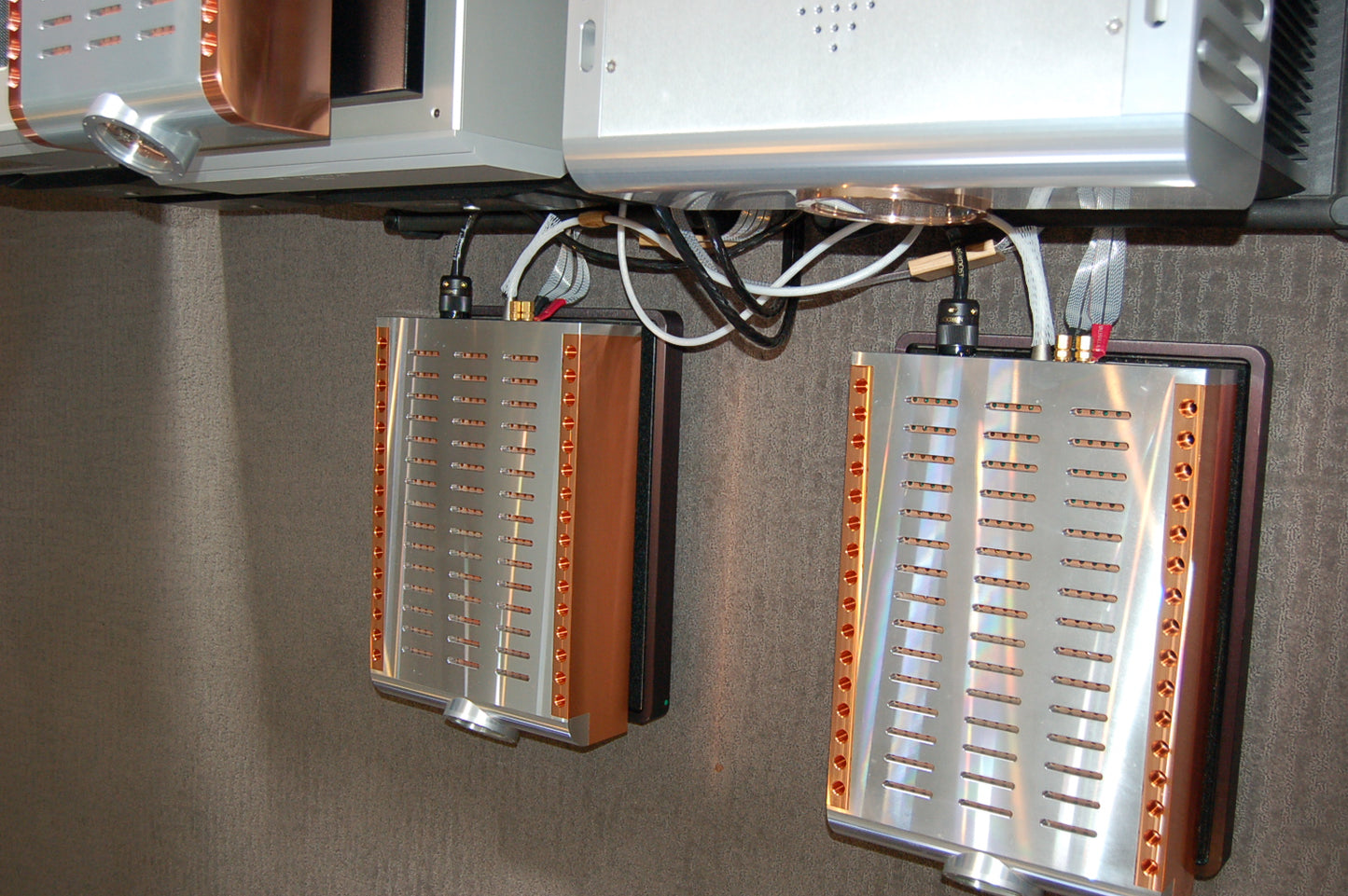description
Good condition- with some of the known discoloration that typically occur between the two types of metals on these amplifiers. These discolorations do NOT affect sound quality or performance of these amazing amplifiers in any way. Will ship in original factory flight cases.
The Momentum is one beefy little monoblock, delivering up to 300 watts into 8Ω, 600W into 4Ω, or 1200W into 2Ω with ruler-flat frequency response from 20Hz to 20kHz and a deviation of only -1dB from 1Hz to 200kHz. Its 28 output transistors are among the fastest available, and a capacitor/resistor network at the base of each one ensure stability even at high frequencies and low speaker impedances.
Inputs include one balanced XLR and one unbalanced RCA, and high-quality binding posts feed the speaker. The Momentum's heatsink is the first to use copper, which exhibits 91 percent more thermal conductivity than aluminum, allowing it to be much smaller than conventional designs. In addition, venturi holes replace the traditional fins, drawing more air through the chassis to increase cooling.
Compact yet powerful
Unlike the often large, boxy Krells of yore, the 5"-high, 95-lb Momentum is remarkably compact for an amplifier rated at 300, 600, or 1200 watts into, respectively, 8, 4, or 2 ohms. While the central power meter dominates the faceplate, the thick copper side panels draw equal attention. And they're bolted to a chassis machined from a single aluminum billet.
In addition to his nearly lifelong dedication to high-performance audio, D'Agostino is a wine enthusiast, a watch collector, and an automobile buff, and he's managed to include elements of each passion into the Momentum's design. The Momentum's large, round, uptilted power meter, with its 19th-century-style needle, is clearly based on classic watch designs, as are the tight tolerances to which the case is machined and assembled, and the seamless fit that challenges you to find a gap or a join, let alone a bolt or screw. Hmmm. Could there be a sonic metaphor there?
Instead of cooling fins, double-funnel–shaped holes are machined into the top edge of each side panel to act much as a carburetor venturi, or an air-infusing wine venturi—but instead of sucking air in to mix it with gasoline or wine, these venturis allow expanding hot air to vent upward, pulling in the cooler air below. The uses of venturis and copper, a far more efficient conductor of heat than the usual aluminum, mean that the Momentum can be both compact and run remarkably cool in class-AB, even when pressed to pump out the power. At idle, it consumes less than 1W.
The low-feedback, fully complementary, balanced design uses 1% metal-film resistors and two dozen 69MHz output transistors in a direct-coupled, discrete, bipolar output circuit with a claimed frequency response of 1Hz–200kHz, –1dB, or 20Hz–20kHz, ±0.1dB. Like darTZeel's NHB-458 —which it sonically resembles, particularly in its top-to-bottom consistency in every performance parameter—the Momentum is a low-feedback, not a zero-feedback design. I wonder if, like darTZeel designer Hervé Delétraz, Dan D'Agostino has sacrificed the lowest possible level of harmonic-distortion for a slightly higher number more consistent across the audioband, and if he's done likewise with the signal/noise ratio
